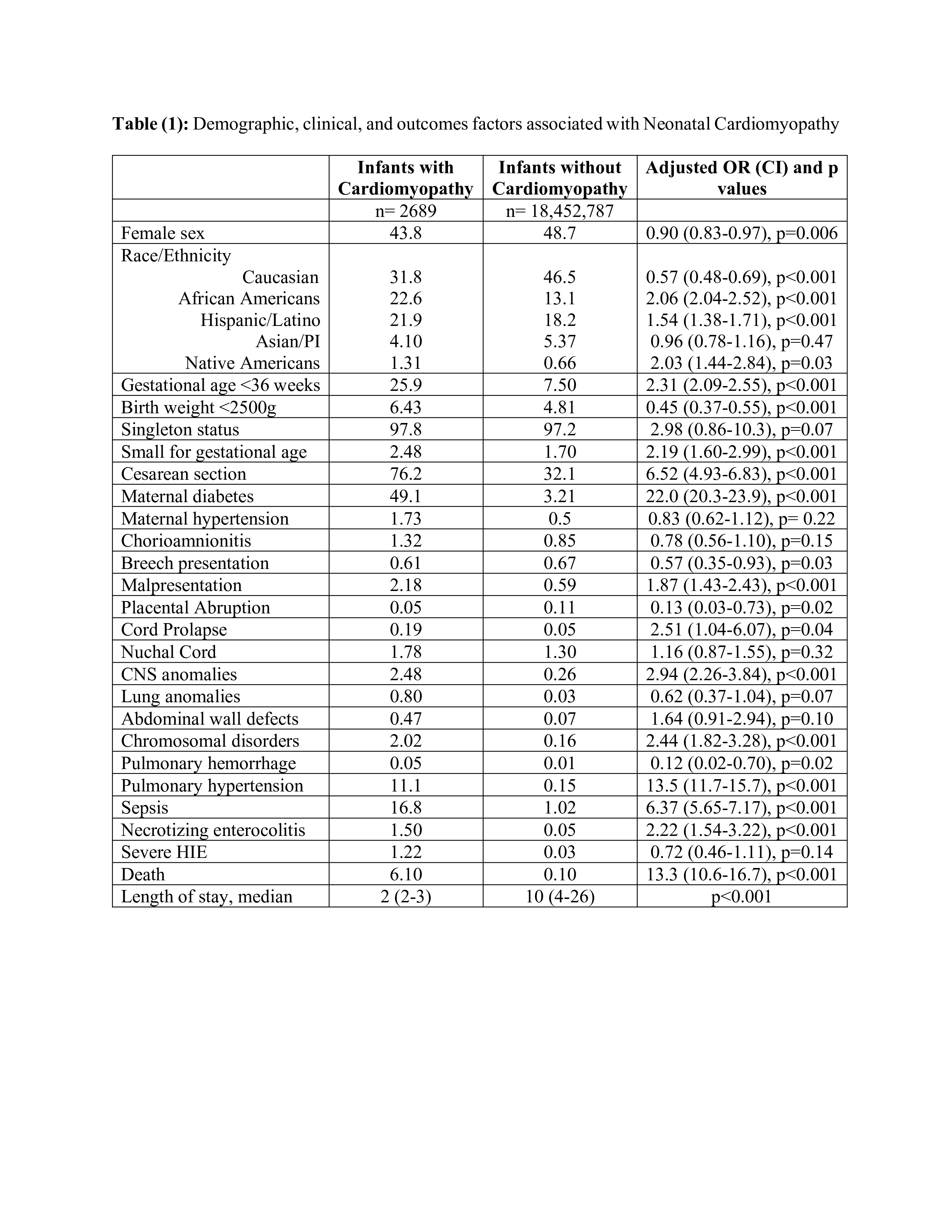Neonatology
Session: Neonatal Cardiology and Pulmonary Hypertension 4: Congenital Heart Disease
166 - Epidemiology of neonatal cardiomyopathy: The U.S national database
Monday, May 6, 2024
9:30 AM - 11:30 AM ET
Poster Number: 166
Publication Number: 166.2859
Publication Number: 166.2859

Mohsen A.A. Farghaly, MD
Neonatologist
Cleveland Clinic Children's
Cleveland, Ohio, United States
Presenting Author(s)
Background: Neonatal cardiomyopathy is a rare condition that may be associated with severe adverse effects and increased neonatal mortality. The epidemiology, clinical presentation, and outcomes of newborn infants with cardiomyopathy is not well described.
Objective: To describe the outcomes of infants diagnosed with cardiomyopathy during the neonatal period.
Design/Methods: We used the National Inpatient Sample (NIS) dataset produced by the healthcare cost and utilization project (HCUP) for the years 2016-2020. We identified neonatal cardiomyopathy using the International Classification of Diseases-Version 10 (ICD10) codes I42.0, I42.1, I42.2, I42.5, I428, I42.9, I43, and B33.24. We included infants of gestational age (GA) > 32 weeks and birth weight (BW) > 1500g. We excluded infants with severe anatomical congenital heart diseases or congenital diaphragmatic hernias. We calculated odds ratios using chi square test and used logistic regression models to calculate adjusted (aOR) while controlling for confounders.
Results: The study included 18,455,476 newborn infants. Infants with cardiomyopathy were 2689 (0.01%). Of them, 48.7% were females, 46.5% were Caucasians, 97.2% were singleton, 7.5% were < 36wk GA and 4.8% were < 2500g BW. Neonatal cardiomyopathy was more common in males, African American, Hispanic/Latino, and Native American races, preterm, and small for gestational age infants. It was associated with infants of diabetic mothers, and deliveries complicated by malpresentation, nuchal cord, and cord prolapse. Neonatal cardiomyopathy was associated with central nervous system anomalies, abdominal wall defects, and chromosomal disorders. It was commonly associated with complications such as pulmonary hypertension, sepsis, and necrotizing enterocolitis (NEC). Mortality with neonatal cardiomyopathy was 6.1% vs. 0.1% in infants without cardiomyopathy, adjusted odds ratios (aOR) 13.3 (95% CI: 10.6-16.7, p< 0.001), Table (1).
Conclusion(s): Neonatal cardiomyopathy is more common in male sex, African American, Hispanic/Latino, and Native American races, preterm, small for gestational age, and infants of diabetic mothers. It is associated with pulmonary hypertension, NEC, and higher mortality.

